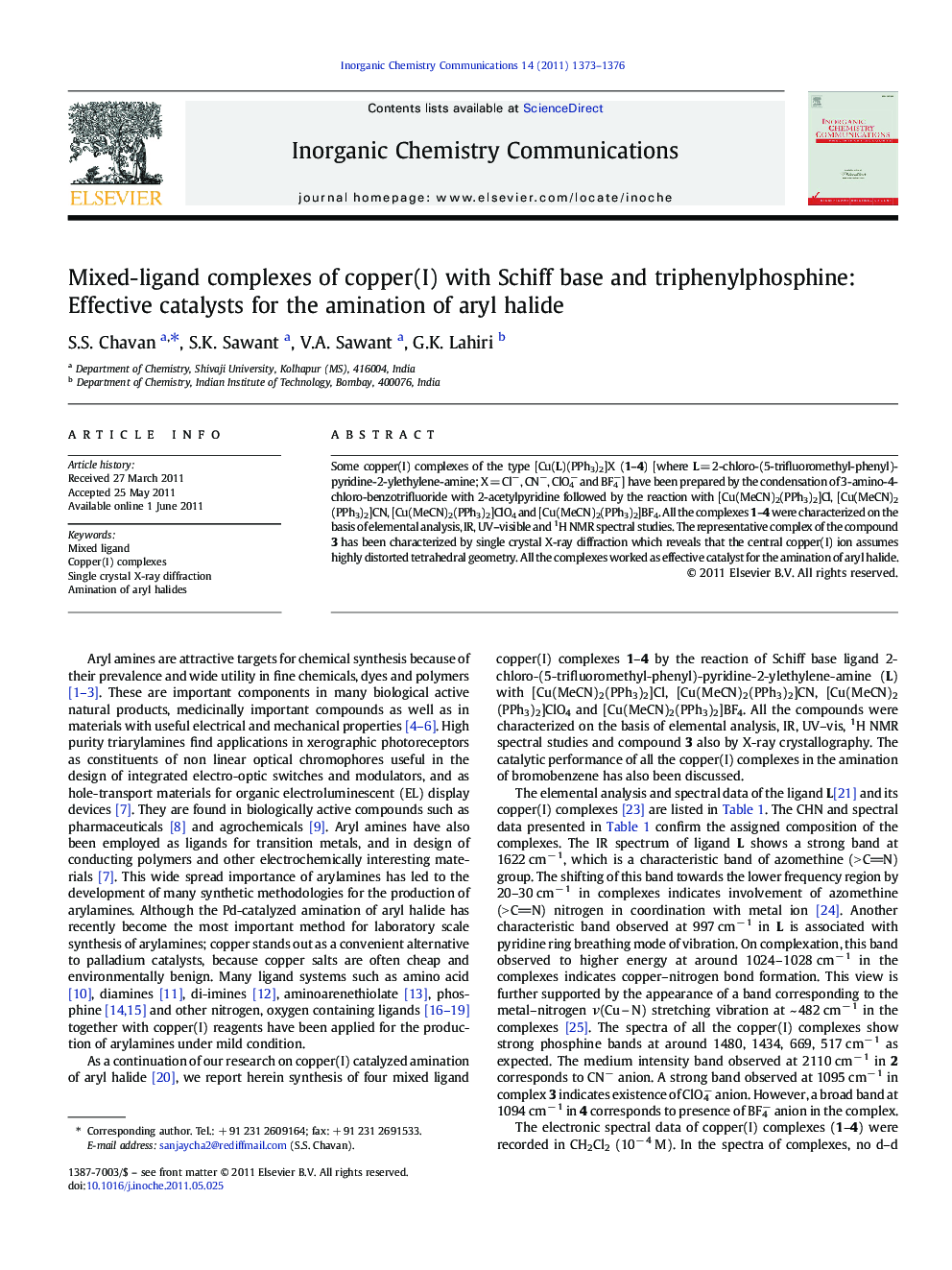| کد مقاله | کد نشریه | سال انتشار | مقاله انگلیسی | نسخه تمام متن |
|---|---|---|---|---|
| 1302543 | 974698 | 2011 | 4 صفحه PDF | دانلود رایگان |

Some copper(I) complexes of the type [Cu(L)(PPh3)2]X (1–4) [where L = 2-chloro-(5-trifluoromethyl-phenyl)-pyridine-2-ylethylene-amine; X = Cl−, CN−, ClO4− and BF4−] have been prepared by the condensation of 3-amino-4-chloro-benzotrifluoride with 2-acetylpyridine followed by the reaction with [Cu(MeCN)2(PPh3)2]Cl, [Cu(MeCN)2(PPh3)2]CN, [Cu(MeCN)2(PPh3)2]ClO4 and [Cu(MeCN)2(PPh3)2]BF4. All the complexes 1–4 were characterized on the basis of elemental analysis, IR, UV–visible and 1H NMR spectral studies. The representative complex of the compound 3 has been characterized by single crystal X-ray diffraction which reveals that the central copper(I) ion assumes highly distorted tetrahedral geometry. All the complexes worked as effective catalyst for the amination of aryl halide.
A series of copper(I) complexes have been prepared and characterized by elemental analyses, IR, UV–visible and 1H NMR spectroscopy. Single crystal X-ray diffraction study of [Cu(L)(PPh3)2]ClO4 shows highly distorted tetrahedral geometry. All the copper(I) complexes worked as effective catalyst for the amination of aryl halide.Figure optionsDownload as PowerPoint slideResearch highlights
► Synthesis of mixed ligand copper(I) complexes.
► Characterization by elemental analysis, IR, UV–visible and 1H NMR spectral studies.
► X-ray diffraction of complex 3 reveals that the central copper(I) ion assumes highly distorted tetrahedral geometry.
► All the complexes worked as effective catalyst for the amination of bromobenzene.
Journal: Inorganic Chemistry Communications - Volume 14, Issue 9, September 2011, Pages 1373–1376